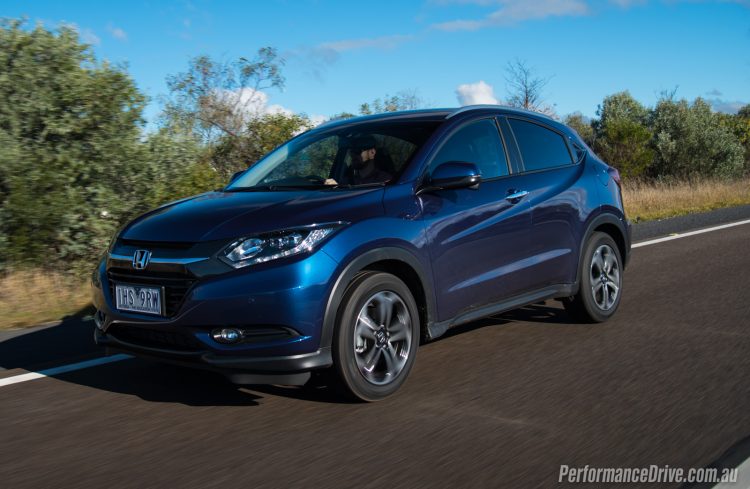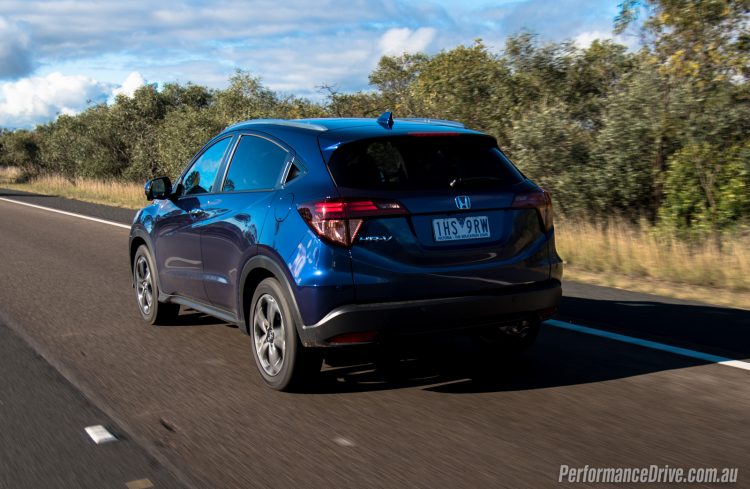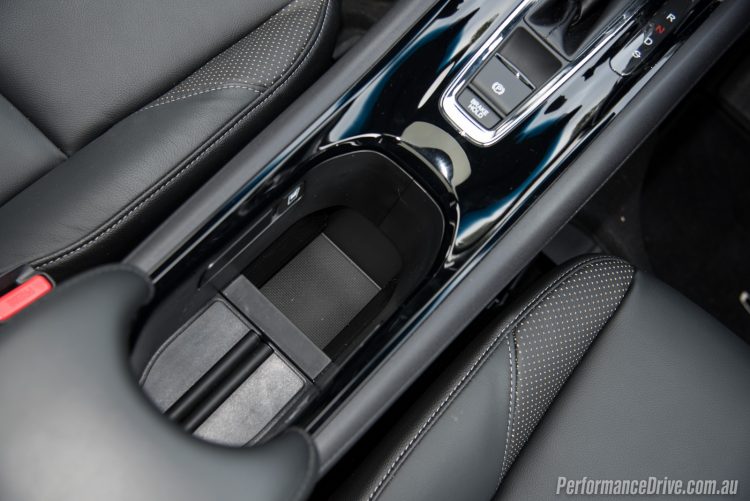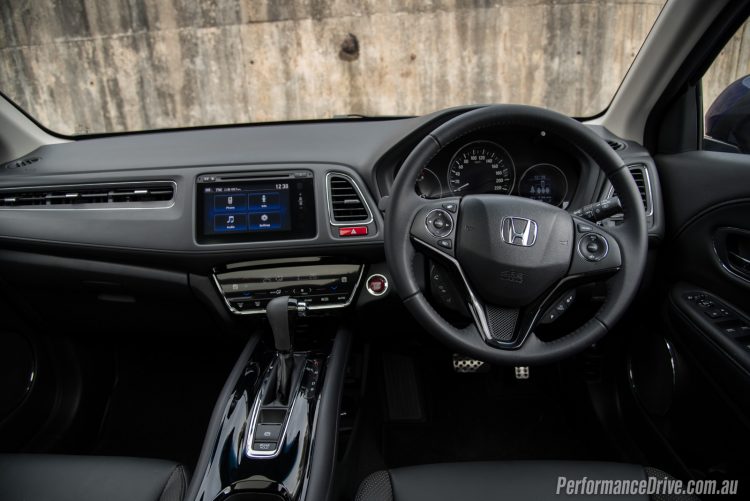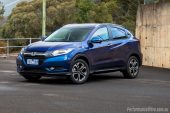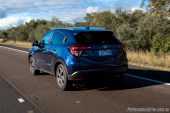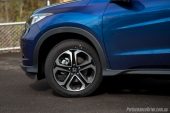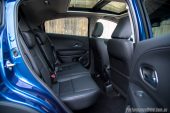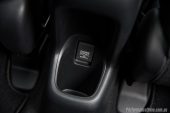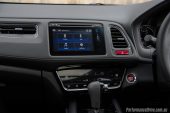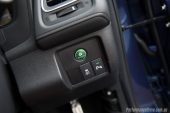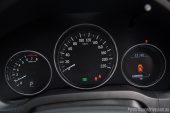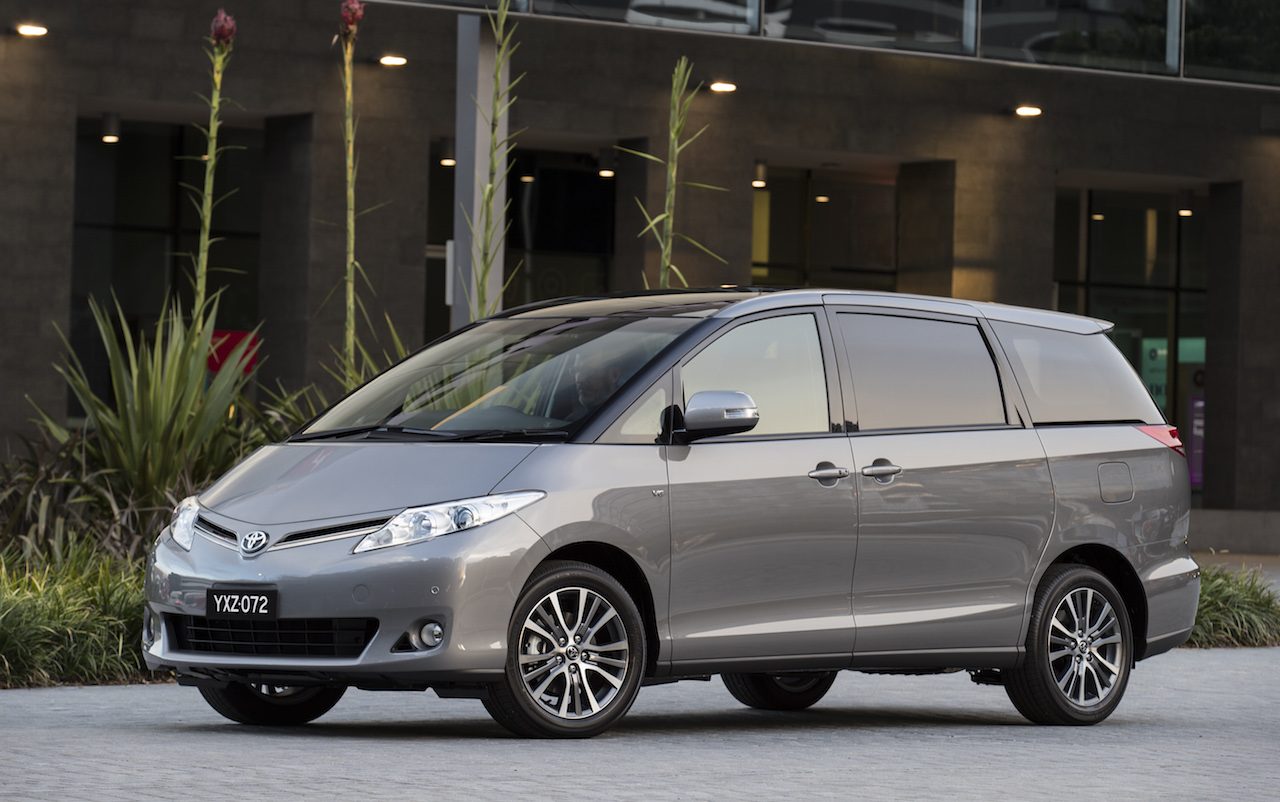One segment experiencing year-on-year growth in the Australian automotive market is the Small SUV. The 2016 Honda HR-V is the third most popular entrant, behind only the dynamic Mazda CX-3 and segment-leading Mitsubishi ASX (according to VFACTS June 2016).
Released in Australia last year, the HR-V features bulbous styling with hidden rear door handles, and a standout interior. The first, boxy iteration of the HR-V looked like nothing else when it launched in 1999. By contrast, the newest model is seeking to capitalise on an existing trend.
This week we tested the VTi-L variant, the most luxurious model, priced from $33,340. It sits above the $24,990 VTi opener and intermediate $27,990 VTi-S. All HR-V’s come with some clever and versatile touches, which explain the car’s popularity. With over 20 small SUVs to choose from, read on to find out whether the HR-V aligns with your particular requirements.
2016 Honda HR-V VTi-L – THE SPECS
[column width=”47%” padding=”6%”]Engine: 1.8-litre four-cylinder
Output: 105kW@6500rpm / 172Nm@4300rpm
Transmission: CVT automatic
Drive type: Front-wheel drive
Wheels: F: 17×7.0, 215/55 R: 17×7.0, 215/55
ANCAP: Five stars (scored 36.22 out of 37)
Tare weight: 1366kg
Power-to-weight: 13:1 (kg:kW)
Official fuel economy: 6.9L/100km
Economy during test: 7.7L/100km[/column] [column width=”47%” padding=”0″]Fuel capacity/Type: 50L/91 RON
Power efficiency: 15.21kW:L/100km
0-60km/h: 5.17 seconds
0-100km/h: 10.28 seconds
1/8 mile: 11.66 seconds at 105.5km/h
1/4 mile: 17.76 seconds at 134.5km/h
100-0km/h braking: Not tested
Decibel at idle: 46
Peak decibel at 60-100km/h: 85
Priced from: $33,340[/column][end_columns]
2016 Honda HR-V VTi-L – THE PACKAGE
The HR-V shares its platform with the Jazz, which means space efficiency and versatility are an inherent part of the equation. Overall length is 4294mm, which is more-or-less line-ball with ASX and CX-3.
All passengers are well looked after within the 2610mm wheelbase, thanks to the spacious rear seat configuration and nifty Magic Seat folding mechanism. This grants the HR-V the option of folding the cushion completely upright to free space behind the front seats. With the former in play, boot space is 1462L, compared with 437L normally.
The interior signals an eye-catching return to form by Honda. The infotainment and climate control (standard across the range) panels are well-integrated and pretty easy to use. The arched centre console looks sporty, with the added benefit of trapdoor-like storage beneath the cup holders.
The front passengers are treated to a trio of functional vents, while the 3D eyeball-like effect of the speedometer is stimulating to look at. The soft leather seats and full-length panoramic roof of the VTi-L add a genuine sense of luxury. Audio quality in this model is crisp and distortion free, with excellent bass. There’s also power sockets front and back to keep everyone’s devices charged. A win here, then, but the lack of satellite navigation, even as an option, stings quite a bit.
Mechanically, all grades get a 1.8-litre ‘i-VTEC’ motor of 105kW and 172Nm, sent through a CVT automatic. Forget any off-roading pretensions, though, all HR-V variants in Australia are front-wheel drive.
The base VTi drinks 6.6L/100km on the combined cycle while the VTi-S and VTi-L slurp 0.3L more thanks to different tyres and more equipment/slightly heavier. Our HR-V returned an impressive average of 7.7L/100km, with some spirited driving involved. Pressing the green ‘Eco’ button is a must if you want figures under 8L/100km.
All models feature a full suite of airbags, a very rigid bodyshell, and driving aids such as reverse camera with VTi-S up adding a handy left mirror-mounted Lane Watch camera and active city braking, while an ADAS package on the VTi-L includes lane departure warning, active high beam and forward collision alert. All variants have been rated five stars safety by ANCAP.
2016 Honda HR-V VTi-L – THE DRIVE
Finding a comfortable driving position is very easy, as are locating all the controls to set off. Progress from the 1.8-litre engine is surprisingly decent, with one of the best-calibrated CVTs we’ve encountered, shifting the 1366kg mini-SUV with ease.
Free of the hesitation and ‘rubber-banding’ we’ve come to expect from a CVT, it actually suits the role of this car well. When hustled, the engine delivers an edgy yet subdued note. Performance numbers belie the drivetrain, which is quite flexible in the real-world, if a little uninspiring. We timed 0-100km/h in 10.28 seconds.
The steering system is accurate at all times without any kickback or loading-up at low speeds. It is consistently weighted from centre to lock, and does a fine job of helping you place the Honda where you want it, at all times. When subjected to enthusiastic driving, you can’t help but yearn for more feedback through the wheel, or a bit more initial roll stiffness in the suspension. It is quite comfortable though, the ride.
Believe it or not, the HR-V has all the makings of a gap-seeking weapon in dense traffic, but for some unsettling pitch under sudden manoeuvres. A sportier Mugen-tuned version would make a fun city car indeed, but for now the Mazda CX-3 is a slightly more rewarding to drive in our opinion, if perhaps not quite as refined or premium-feeling.
2016 Honda HR-V VTi-L – THE VIDEO
2016 Honda HR-V VTi-L – THE VERDICT
Honda doesn’t quite have the same desirability factor it had in the late 1980s/early 1990s, but it is definitely starting to come into its own again, especially after a long period of blandness while pandering to the conservative American market.
This HR-V proves to be a very competent city car, with an efficient, responsive powertrain and outstanding interior. It is refined, versatile and very well-built which are three very Honda attributes.
While a decent drive, it lacks the outright fun-factor and sex appeal of the old Preludes and Integra Type-Rs. Or a Mazda CX-3. However, if you are the type who values inner-beauty above sporting capabilities then the HR-V deserves your acquaintance.
[column width=”47%” padding=”6%”]PROS:
– Smooth, efficient and responsive powertrain
– Real-world economy
– Unique, high quality interior
– Active Lane Watch technology
– Driving refinement and ride quality
[/column] [column width=”47%” padding=”0″]CONS:
– No sat-nav on any model
– Engine lacks zingy character against some rivals
– No manual transmission or AWD options like overseas versions[/column][end_columns]
